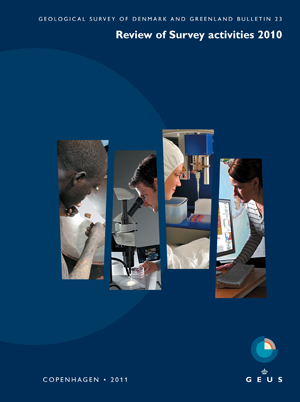Shale gas investigations in Denmark: Lower Palaeozoic shales on Bornholm
DOI:
https://doi.org/10.34194/geusb.v23.4794Abstract
The Cambrian to Lower Silurian succession in Denmark is mostly composed of organic-rich black shales that were deposited in an epicontinental sea during a period of high global sea level (Haq & Schutter 2008). The mid-Cambrian to early Ordovician Alum Shale was intensively studied in the 1980s for its source-rock properties (e.g. Buchardt et al. 1986). Recent attention has focused on its potential as an unconventional shale gas source (Energistyrelsen 2010). On southern Bornholm, many wells have been drilled through the Lower Palaeozoic succession because of its importance for groundwater exploitation. In western Denmark, only the deep exploration wells Slagelse-1 and Terne-1 have penetrated the Alum Shale, and knowledge of the unit west of Bornholm is thus very limited (Fig. 1).
Downloads
Downloads
Published
How to Cite
Issue
Section
License
GEUS Bulletin is an open-access, peer-reviewed journal published by the Geological Survey of Denmark and Greenland (GEUS). This article is distributed under a CC-BY 4.0 licence, permitting free redistribution and reproduction for any purpose, even commercial, provided proper citation of the original work. Author(s) retain copyright over the article contents. Read the full open access policy.







